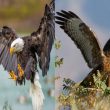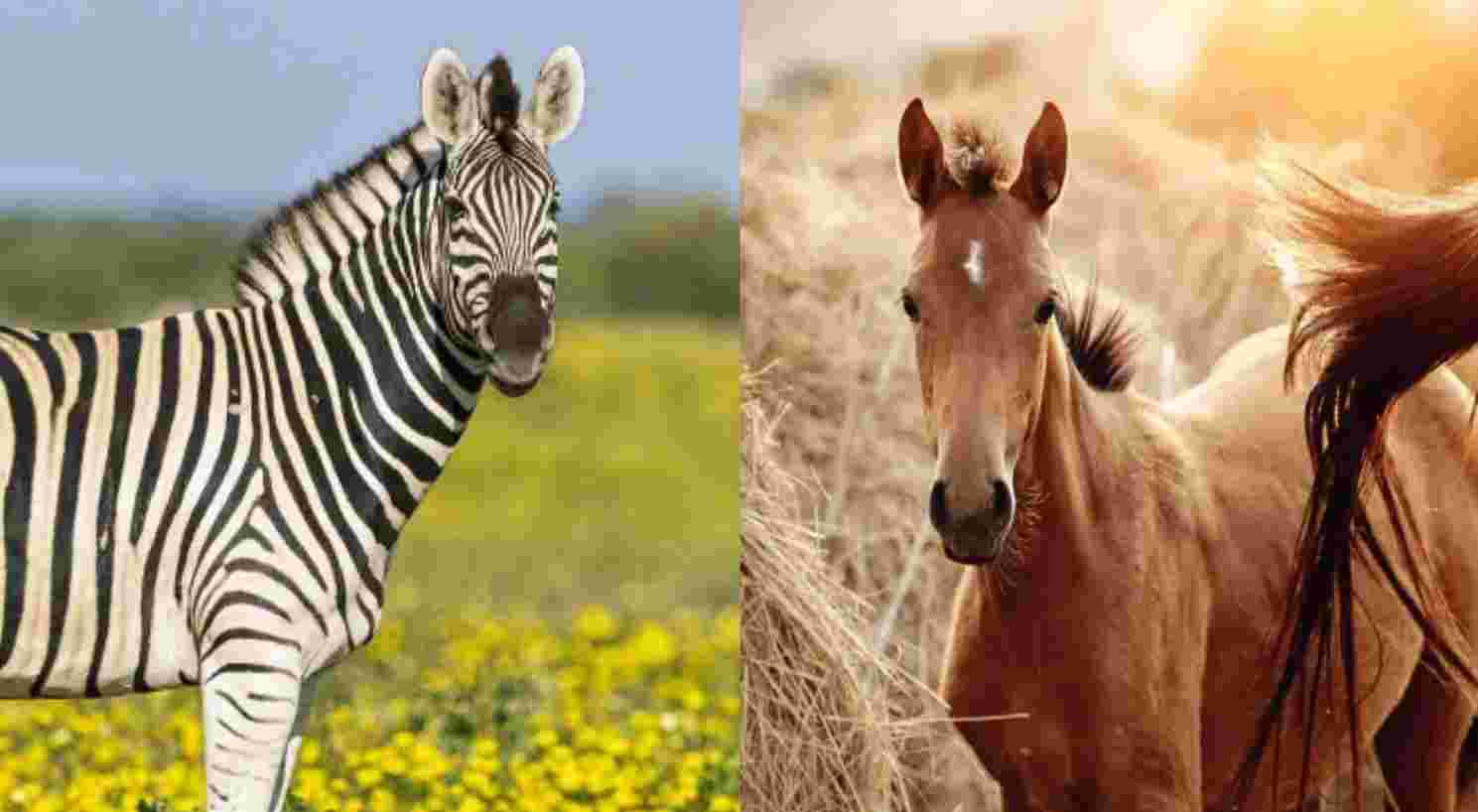In the expansive world of equines, the zebra and the horse stand as charismatic representatives, each adorned with unique traits that captivate the imagination. While they share a common ancestry, the zebra and the horse have evolved distinct features, behaviors, and ecological adaptations. This exploration delves into the differences between these magnificent creatures, unraveling the intricate tapestry of their evolutionary paths and the roles they play in diverse ecosystems.
Evolutionary Background
Both zebras and horses belong to the Equidae
family, sharing a common evolutionary ancestor that dates back millions of years. Their shared lineage explains the similarities in their basic skeletal structure, teeth, and digestive systems. However, over time, each species has undergone unique adaptations in response to their respective environments.
1.2 Divergent Evolution
The divergence between zebras and horses occurred as they adapted to different habitats and ecological niches. Zebras, native to Africa, developed distinctive striping patterns, while horses, with a global distribution, evolved diverse breeds with varying coat colors and patterns.
Physical Characteristics
2.1 Zebra: Striking Stripes
The most iconic feature of zebras is undoubtedly their black and white stripes, a striking adaptation that serves various purposes. The unique patterns act as a form of camouflage, confuse predators, and regulate body temperature. Zebras also possess slender bodies, elongated heads, and a flowing black mane.
2.2 Horse: Coat Variations
Horses, in contrast, exhibit a wide range of coat colors and patterns. From solid hues like bay, chestnut, and black to intricate patterns such as pinto and appaloosa, horses showcase remarkable diversity. Their manes and tails vary in length and texture, with some breeds featuring flowing, silky manes and others exhibiting more coarse and dense hair.
Ecological Adaptations
3.1 Zebra: Surviving the Savanna
Zebras are well-adapted to the grasslands and savannas of Africa. Their stripes provide effective camouflage in the tall grass, helping them evade predators like lions and hyenas. Zebras are also highly social animals, often found in groups, or “dazzles,” where their collective stripes create a visually confusing effect for would-be predators.
3.2 Horse: Global Versatility
Horses, having been domesticated by humans, showcase a remarkable adaptability to diverse environments. They thrive in a range of climates, from the arid plains to mountainous terrains. Domesticated horses have played pivotal roles in agriculture, transportation, and even warfare throughout human history.
Behavioral Differences
4.1 Zebra: Vigilant Herd Life
Zebras are known for their vigilant and protective social structure. Living in herds provides them with safety in numbers, and they exhibit strong bonds with their fellow zebras. Their alert and cautious nature helps them navigate the challenges of the African wilderness.
4.2 Horse: Human Companionship
Horses, especially domesticated breeds, have developed strong bonds with humans. Their trainable nature and intelligence have made them valuable companions for various activities, including riding, sports, and therapy. Domestic horses often form close connections with their human handlers.
Human Interaction
5.1 Domestication of Horses
Humans have played a significant role in the domestication of horses, transforming them from wild creatures into essential partners in agriculture, transportation, and leisure. The domestication of horses marked a pivotal moment in human history, influencing cultural practices, trade, and the development of civilizations.
5.2 Zebras in the Wild
Unlike horses, zebras have largely remained wild and untamed. While there have been attempts to domesticate zebras, their inherent wariness and the challenges of working with their strong herd instincts have made zebras less amenable to traditional domestication compared to horses.
Links to Related Information
For a deeper understanding of zebras and horses, consider exploring the following Wikipedia pages:
Conclusion
In the grand tapestry of the animal kingdom, zebras and horses represent distinct chapters, each with its own set of adaptations, behaviors, and interactions with humans. The zebra’s iconic stripes and vigilant savanna lifestyle paint a picture of survival and community in the wilds of Africa. In contrast, the horse’s versatile coat colors, domestication, and centuries-long partnership with humans showcase the remarkable impact of human-animal collaboration on the course of history.
As we marvel at the beauty of zebras roaming the African plains and appreciate the companionship and contributions of horses in our daily lives, it becomes clear that these equines embody the diverse ways in which animals have intertwined with human existence. The differences between zebras and horses, both physically and behaviorally, underscore the fascinating journey of evolution and the
dynamic interplay between species in our ever-changing world.
Contents
- 1 Evolutionary Background
- 2 1.1 Shared Ancestry
- 3 1.2 Divergent Evolution
- 4 Physical Characteristics
- 5 2.1 Zebra: Striking Stripes
- 6 2.2 Horse: Coat Variations
- 7 Ecological Adaptations
- 8 3.1 Zebra: Surviving the Savanna
- 9 3.2 Horse: Global Versatility
- 10 Behavioral Differences
- 11 4.1 Zebra: Vigilant Herd Life
- 12 4.2 Horse: Human Companionship
- 13 Human Interaction
- 14 5.1 Domestication of Horses
- 15 5.2 Zebras in the Wild
- 16 Links to Related Information
- 17 Conclusion

















